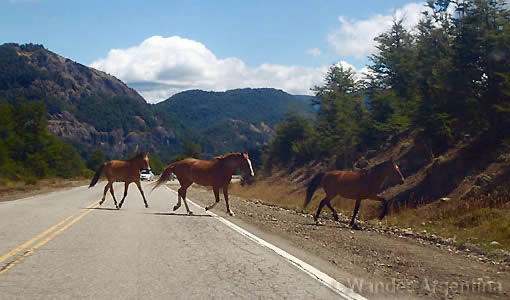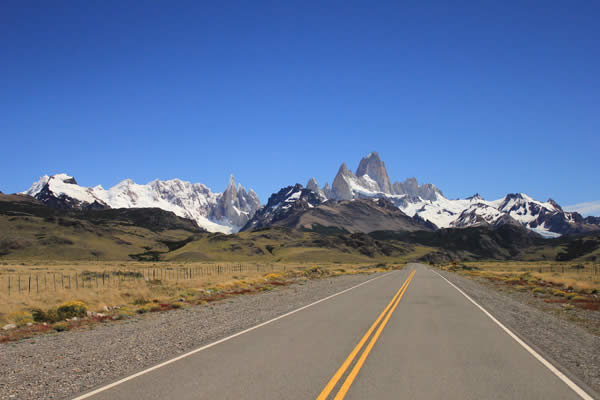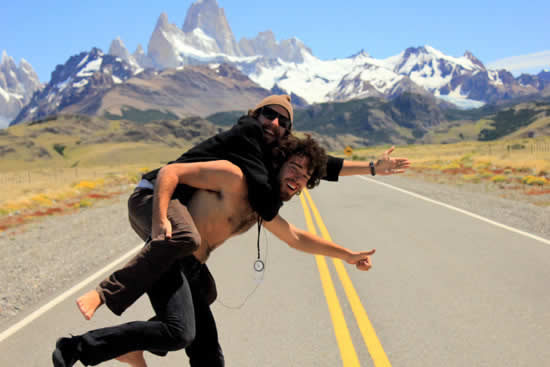Hitchhiking in Argentina is smelly, exhausting, wet, sweaty, cold, hot, windy, dry, uncomfortably awkward and highly rewarding.

Thumbing rides in this huge, sparsely populated country can mean days in a variety of miserable conditions, from icy Patagonian wind to a tropical Andean heat.
Still nothing compares to a ride well earned, that sudden thrill of a vehicle slowing down and the fumbling moment when one gathers their belongings and sprints towards an open door.
In a country with steadily increasing bus prices, hitchhiking has become a popular form of travel for the modern day backpacker in Argentina. But don’t be fooled by the trend — it is difficult.
The trick is to be prepared for anything.
Hitchhiking Gear Basics
A hitchhiker can end up in some uncomfortable places.
A camp stove, tent and a sleeping bag make the back of a YFP service station a lot more accommodating.
The camp stove provides a way to sustain simple, but much needed nourishment.
The fuel for the stove can be purchased at outdoor stores or at the Carrefour supermarket chain.
Make sure to carry enough water for cooking and drinking, since you never know where you will find yourself.
Unlike other South American nations, Argentina has potable water throughout most of the country.
A tent and sleeping bag enables you to camp wherever you want. You don’t have to make it somewhere with amenities; you can go anywhere.

It’s nice to know you can get some sleep wherever you are, even though your dreams will probably be interrupted by the groan of a diesel engine.
It is completely possible to endure hitchhiking in Argentina without a tent, but it’s not optimal.
No tent means staying up all night in a service station sipping coffee, or resting on a bench in a bus terminal, waiting for the sun to peak over the horizon until the moment you can throw a thumb in the air.
Outdoor gear is expensive in Argentina (as are most durable goods) so hitchhikers will save money if they come to the country with their own gear.
Hang out at Gas Stations
Service stations are the backbone of the world of hitchhiking in Argentina.
They are where rides originate and end, where truckers sleep, where you will find yourself filling water bottles and buying chips.
The prime location to get rides are the gas stations on the outskirts of cities and towns, where the cars thin out and head in one direction.
Inflated food prices make the grocery store a better option for sustenance, but these make ideal pit stops for everything else.
Patience on the Road
The ease at which someone can catch a ride depends more on serendipity than on any set of natural or developed skills. There are a few things you can do to improve the likeliness to get a lift though.
Truckers sleep in their trucks in service stations.
They wake up early to their Gauchito Gil decals staring back at them under the red tassels that line their tinted windows.
You can watch from afar as they emerge from their rigs to fill their hot water thermos for their morning mate, out of machines designed just for that purpose.
This is the magic moment when you can hit them up for rides directly.
Many truckers will claim that their employers prohibit drivers to pick up hitchhikers, so expect a lot of “no’s” but remember all that you need is that one “yes.”
If begging face-to-face makes you feel like a bum, use the age-old method of a thumb in the air and a cardboard sign.
A sign creates attention, and as a hitchhiker you want people to notice you, so be creative.
Give a smile and a wave, even if they pass by.
Keep in mind that truckers talk to each other on the CB radio.
If they are aware you have been in the same spot for hours, they may take pity on you and pick you up.
Whatever you do, do not be discouraged if you are having bad luck.
Eventually someone will give you a lift; patience is the only skill a hitchhiker needs.
The length of any one ride depends on the destination of the driver.
Sometimes a ride with a family can be 20 kilometers and sometimes a trucker will haul you 1,000 kilometers — you never know.
Argentines are very proud of their country and like to teach you about their culture.
Hitchhiking is a great way to get to know the society on a more personal level than merely staying in hostels, riding on buses, and going on tours.
Speaking Spanish can make a car ride much more interesting, especially in Patagonia where drivers dazzle with Malvina (Falkland) war stories, spin tales about their numerous romantic conquests and instruct you on how to make the perfect asado.
Hitchhiking Gear Essentials Checklist
Argentina Hitchhiking Safety Measures
There is always an element of uncertainty with hitchhiking, which makes it initially attractive for the adventurous, but unfortunately makes it slightly dangerous (or very dangerous, according to your mother.)
Sleeping in the back of service stations or in a field on the side of the road can be frightening, loud and miserable, but it is not your only option.
You can always hitchhike to cities and stay in hostels.
Overall Argentina is a safe country in which to hitchhike, but bring a friend.
It makes it safer and the bad times better.
Women shouldn’t attempt extended trips alone — in 2004 Swiss traveler, Annagreth Würgler (link in Spanish) disappeared after accepting a ride in La Rioja.
The fact that the case received so much media attention in Argentina demonstrates that it was a very unusual case.
Use common sense. If you decide to hitchhike, realize you are taking a risk as far as weather goes too. Don’t hitchhike in sparse areas of Patagonia in winter or the tropical north in summer.
Argentine drivers are notoriously reckless and often exceed high speeds due to the lack of radar enforced roads outside of Buenos Aires, so do not stand too close to the shoulder.
Also don’t hitch at night. It’s dangerous, and no one will pick you up.
Friendly Drivers Offering Rides
Most Argentines who pick up hitchhikers tend to be eccentric, lovely people, offering rides altruistically.
Aside from rural routes where one’s car serves as a ‘community vehicle,’ most drivers will not even ask for money.
So when you are looking down the gray asphalt and the cold rain makes you pine for a warm hostel bed and a nice sized bife de chorizo, remember the next person who picks you up will probably be friendly, they will have a nice warm car and maybe will even give you cookies.
Just be prepared to serve a lot of yerba mate.
— Zach W. Watson

→ Ten Tips for Hitchhiking in Argentina
→ Not up for hitching? Read About Driving and Renting a Car in Argentina
→ Do you need travel insurance for Argentina?

